Art Fairs
Colombia’s ArtBo Strengthens Bid to Lead Latin American Art Fairs
Bogotá’s art fair is not playing the Basel or Frieze game, and it seems to be working.

Bogotá’s art fair is not playing the Basel or Frieze game, and it seems to be working.

Lorena Muñoz-Alonso

Today, the 12th edition of ArtBo, Bogotá’s contemporary art fair opened is opening its doors to the public, gathering over 74 galleries from 28 cities, and a whopping 3,000 artworks from over 500 artists.
Since the art historian María Paz Gaviria took the helm of the fair five years ago, ArtBo has grown exponentially from a local event to one of Latin America’s strongest art fairs, only second to Mexico’s Zona Maco. This may not be too surprising, considering that Gaviria comes from a line of mediators; after all, her father, César Gaviria, is the former president of Colombia.
Despite its relevance in the region’s art market—evidenced by the presence of Latin American blue-chip galleries such as São Paulo’s Luisa Strina and Fortes Vilaça, Bogotá’s own powerhouse Casas Riegner, or Madrid’s Elba Benítez—ArtBo is most definitely a slow fair, where sales take place at a leisurely pace and galleries are as keen on making new contacts as they are on selling their wares.
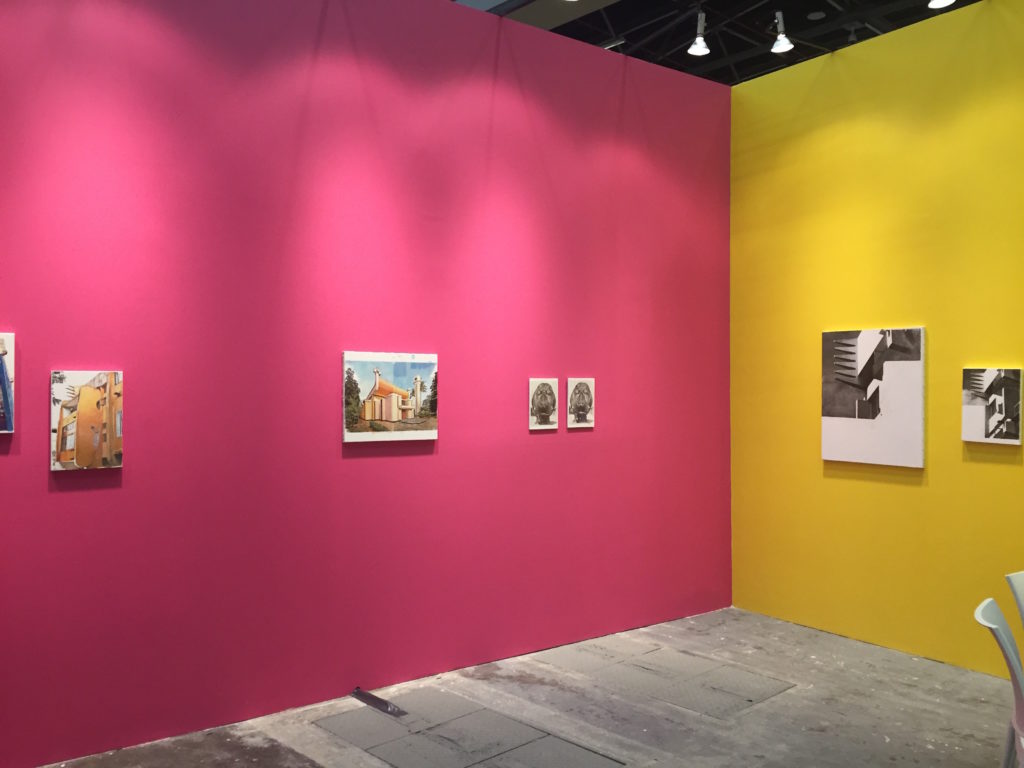
Booth of Cristina Guerra Gallery at ArtBo 2016. Photo Lorena Muñoz-Alonso.
“The fair began 12 years ago as an initiative from the Chamber of Commerce of Bogotá,” Gaviria told artnet News during the fair’s preview on Wednesday. “It’s therefore not just a commercial project, like a private fair, but also a project by the city to position itself as a platform of the arts and promote its artists.”
The growth of the fair, which was launched in 2005, follows the general development of the art market in the country. When asked to identify the moment when art collecting began to take off in earnest in Colombia, most dealers at the fair unequivocally mentioned the mid to late 2000s, which coincides with the economic boom that accompanied the beginning of a period of peace and security in a country that had been plagued by drug cartels and guerrilla warfare.
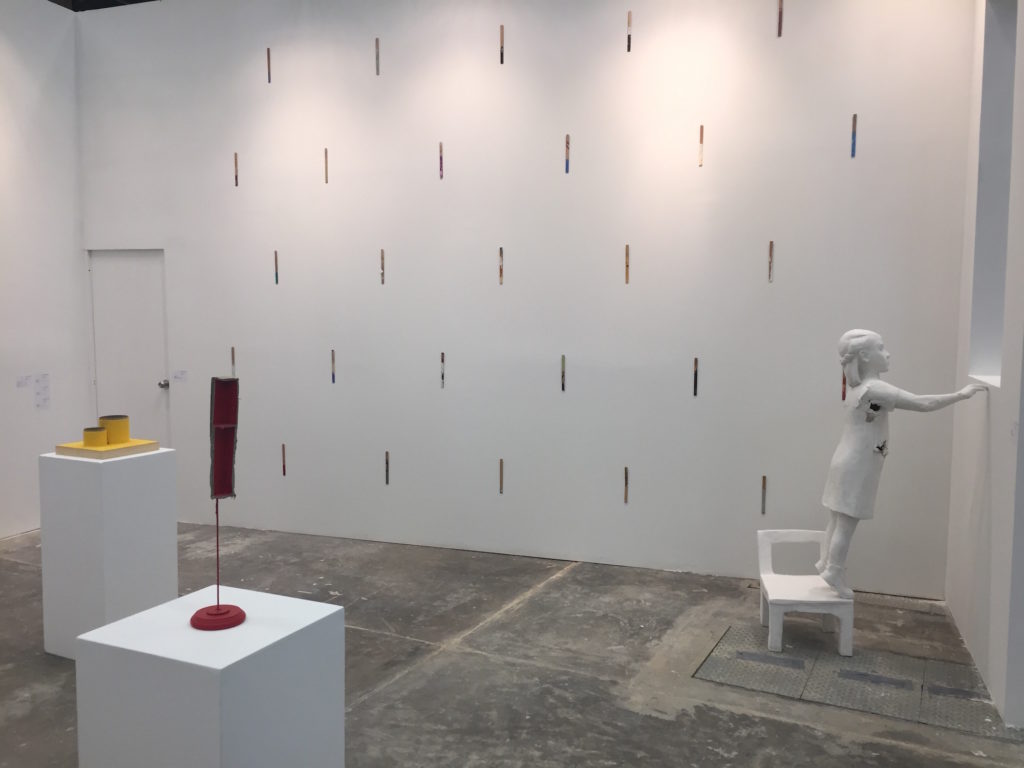
Works by Carlos Bunga, Hreinn Fridfinnsson, and Dominik Lang at the booth of Elba Benítez at ArtBo 2016. Photo Lorena Muñoz-Alonso.
“The fair has left the local art market grow and followed its pace, rather than trying to become a massive fair without the market and interest to support it,” Madrid dealer Elba Benítez, who has been participating in the fair for seven years and is a also a member of the gallery selection committee, told artnet News on preview day.
“There’s no point in trying to be a Frieze or a FIAC,” she added. “ArtBo is all about making discoveries. Here you can meet very loyal collectors, who will go on to buy a work from one of your artists at Miami Basel, ARCO Madrid, and Frieze New York, which is the circuit that collectors who attend this fair are usually into. There’s lot of local collectors here, but also from the US, Panama, Perú, and Costa Rica.”
Targeting its public, Benítez was holding court at large booth by the entrance, featuring works by mainly Latin American and Portuguese artists from its roster, such as Carlos Bunga, Fernanda Fragateiro, Julião Sarmento, Armando Andrade Tudela, and Ernesto Neto.
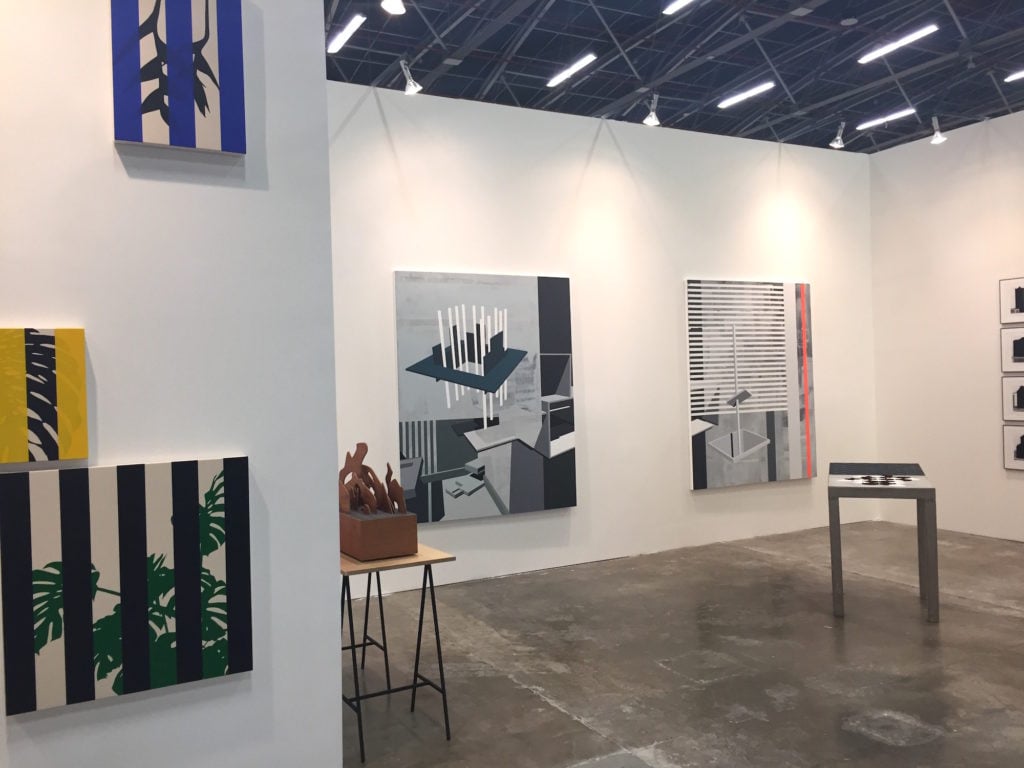
Booth of Instituto de Visión at ArtBo 2016. Photo Lorena Muñoz-Alonso.
Nearby, Bogotá’s Instituto de Visión was also showcasing a phenomenal group presentation of gallery artists from its two main programs: one, focused on young and mid-career artists, such as Marlon de Azambuja, Alberto Lezaca, Otto Berchem, and Felipe Arturo; the second, focused on rediscovering what they call “visionaries,” like the surrealist painter and sculptor Ofelia Rodríguez, and the photographers Fernell Franco, Jesus Abad Colorado.
The prices of the works on display, all between $2,000 and $20,000, fit the ArtBo range, where the name of the game is decidedly mid market (hence the conspicuous absence of Colombian art stars Doris Salcedo, Óscar Muñoz, and the younger Oscar Murillo across the booths).
The price range was quite similar at LA-based Mama gallery, which was showing paintings and sculptures by a group of young artists including James Georgopoulos, Marc Horowitz, Mattea Perrotta, Cole Stenberg, and Jordan Sullivan.
“I’ve heard great things about this fair, people whom I really trust recommended me to take part in it,” gallery director Adarsha Benjamin told artnet News when asked about reasons to participate. It’s her first time at the fair, and she says, “I am really interested in taking the gallery beyond LA and entering conversations with the art scenes of countries like Colombia and Mexico.”
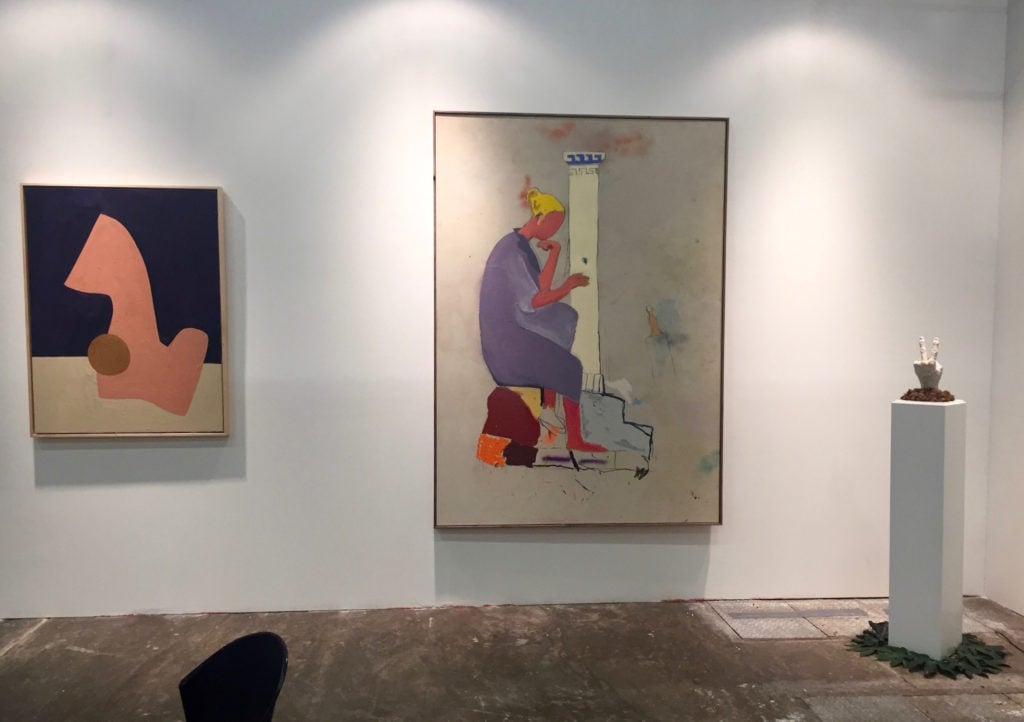
Booth of Mama at ArtBo 2016. Photo Lorena Muñoz-Alonso.
The participation of Mama—the second LA-based gallery to ever show at the fair, and the first one bringing all LA-based artists—is yet another proof of the growing presence of US galleries in the fair, including Steve Turner, Leon Tovar Gallery, Johannes Voght Gallery, Gilda Gallery, Greenspon, Brennan & Griffin, Sicardi Gallery, and Y Gallery. The charms of the Latin American market are extending beyond Miami, it seems.
At the section Proyectos, Jens Hoffmann from New York’s Jewish Museum has curated “Figurativism,” which gathers 15 galleries presenting solo booths of artists working with figuration. Among them, the young Japanese artist Akira Ikezoe at Proyectos Ultravioleta clearly steals the show, with his naïf oil-on-canvas paintings that explore and satirize quotidian human problems and conflicts with nature.
The works (with prices ranging $2,200 to $15,000) are inspired by old Japanese graphic tales called etoki, which somehow read like hieroglyphs. The young gallery, located in Guatemala City, has recently won the 2016 Focus Stand Prize at Frieze London, and it’s definitely one to keep an eye on.
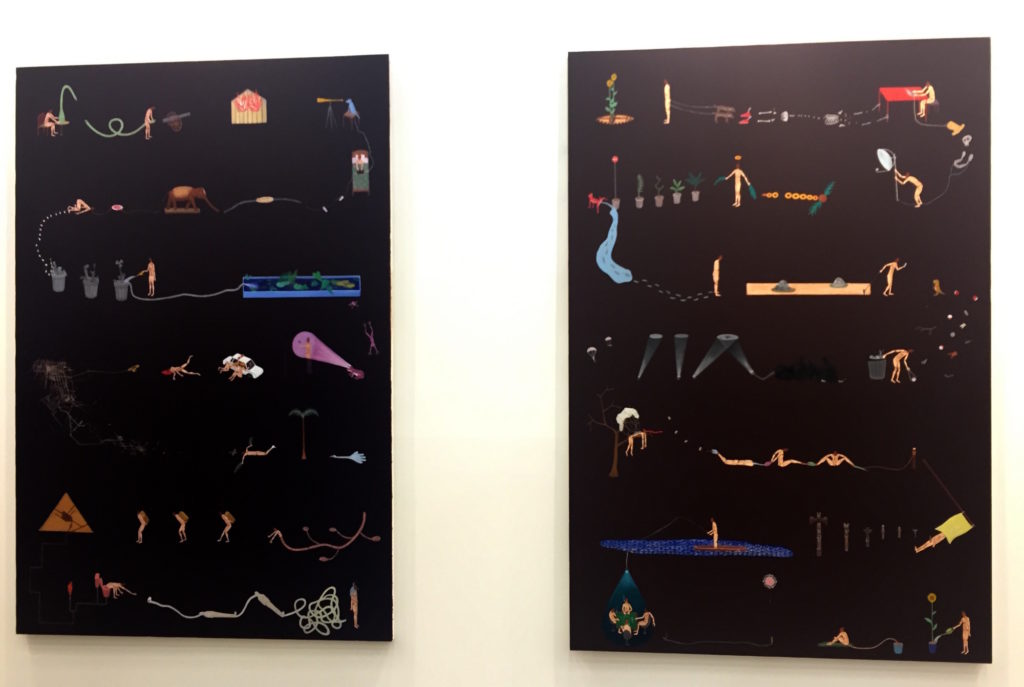
Akira Ikezoe at the booth of Proyectos Ultravioletas at Artbo 2016. Photo Lorena Muñoz-Alonso.
Also invited by Hoffmann is Mexico City’s Yautepec, which is presenting a selection of paintings by the young American painter Morgan Mandalay, who crafts noir cartoon-esque paintings that are as humorous as they are disquieting, and with prices ranging $2,000 to $6,000, they are also affordable too. Here at ArtBo, his oil and acrylic spray paint canvases feature different views of a gorilla at the zoo, which not only seem to tackle the plights of animal life, but also the feelings of entrapment and boredom that accost human beings.
Back at the general section, another gallery that stood out was Paris-based Mor Charpentier, which presented an eye-catching booth featuring a cluster of gallery artists, including Milena Bonilla, Uriel Orlow, Carlos Motta, Teresa Margolles, and Edgardo Aragón among others. Nearby, São Paulo’s Galeria Jaqueline Martins delighted as usual with its selection of minimal and poetic works, as is typical of the artists in its roster. At the fair the gallery is presenting sculptural and wall works by Adriano Amaral, Daniel de Paula, Charbel-Joseph H. Boutros, and Ícaro Lira.
Also from São Paulo, Fortes Vilaça offered a simple booth with winning works by Los Carpinteros, Sara Ramo, and, above all, Cristiano Lenhardt, whose sculptural series Nova Bandeira was an Instagram favorite from the get go.
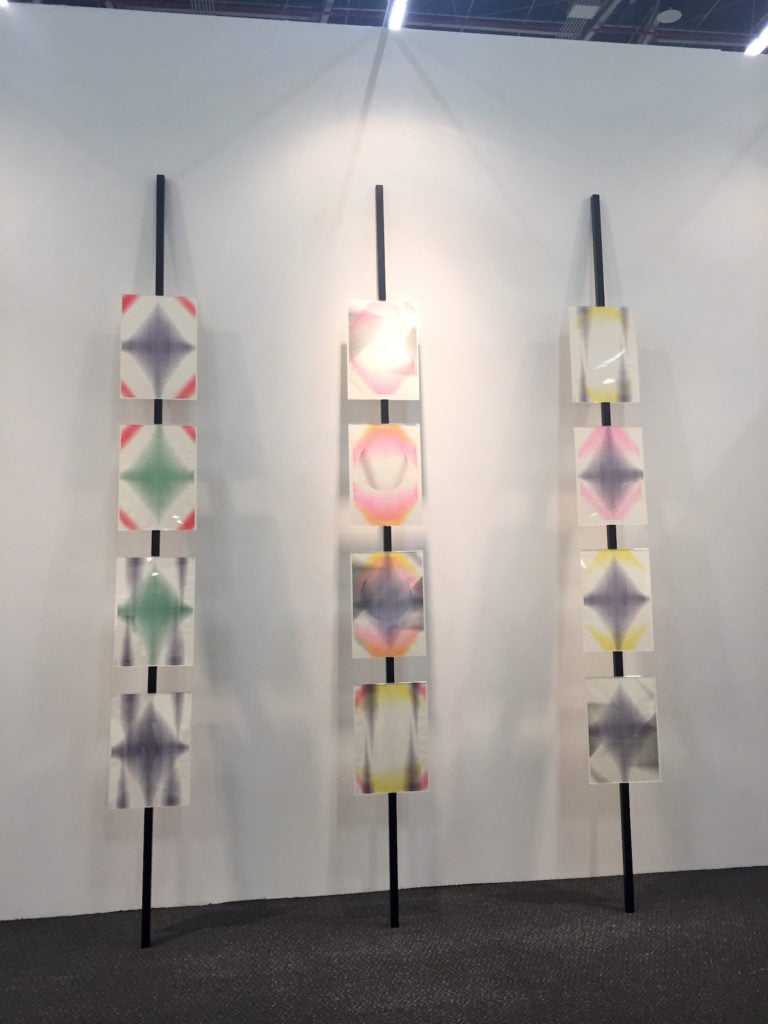
Cristiano Lenhardt, Nova Bandeira #8, Nova Bandeira #9, and Nova Bandeira #10 (all 2016) at the booth of Galeria Fortes Vilaça at ArtBo 2016. Photo Lorena Muñoz-Alonso.
But if there is a true highlight at the fair this year, it is, no doubt, the exhibition “Invisible Forces,” curated by Pablo Leon de la Barra, the Guggenheim’s UBS Map Curator for Latin America, and curator Erika Florez for the section Referentes. This section, now in its third year, focuses on historical and overlooked practices, featuring artworks available for sale at participating galleries but presented as a thoughtfully curated exhibition.
The show uses as a starting point the few remaining minutes of the only meeting of a group of Latin American art critics in 1989 to prepare a show called “Invisible Forces” that never took place.
The show at ArtBo, as historical speculation, finally materializes that thwarted project, gathering works by an exciting group of Latin American artists, including Alicia Barney, Miguel Ángel Cárdenas, Ulises Carrión, Carlos Ginzburg, Ana Mercedes Hoyos, Anna Maria Maiolino, and Lotty Rosenfeld. On preview day, the majority of comments heard across the aisles were praising the show.
“ArtBo is following a unique model. We don’t want to recreate anything that is being done at other fairs across the globe,” Gaviria said, echoing the sentiment expressed by Benítez earlier. “We are thinking about content, content that is specific, different, and interesting. We are extremely careful about what we show, and that might be the reason of the fair’s success.”
With Colombia’s economy currently being the third most dynamic in Latin America, with only Brazil and Mexico ahead, the fair also has the support of a growing art market behind. With its reputation as a well curated regional fair now firmly established, it remains to be seen whether ArtBo can make the challenging transition from exciting boutique fair to reliable investment for galleries beyond the Colombian borders.
The 12th edition of ArtBo is taking place at Corferias, Bogotá, from October 27-30, 2016.